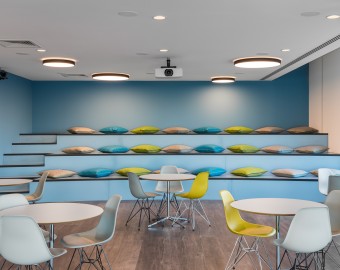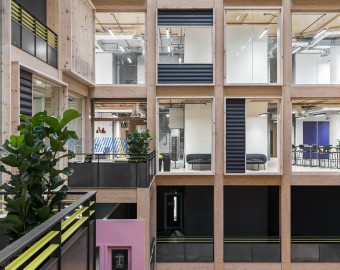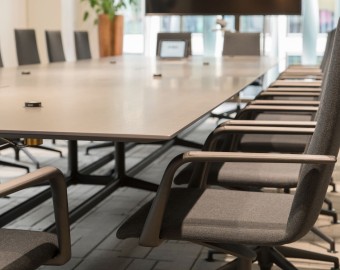Eight ways to incorporate employee wellbeing in your office design
It’s accepted wisdom that a company’s greatest asset is its people, and our health and wellbeing has been on the agenda for many businesses for some time. The implications for office design are varied and can generally be categorised into eight areas for consideration:
1 The working environment
A comfortable and productive workplace is created with both the physical environment and the corporate culture. With businesses still defining how the office needs to support their agile staff, the design and layout of the workspace itself is becoming ever more important, not only to ensure that it’s appropriate for the number of users but also to foster a feeling of wellbeing. In short, employees need to want to come into the office and spend time there, both to deliver their best work and to feel valued for their contribution.
A company’s culture is likely to be unique, but there are some general themes that emerge when creating the ideal working environment. Inclusion and openness are central to managing change, with employees’ opinions being valued and considered as part of the design process. Also important are the ability to communicate effectively with peers and management, to feel relaxed and comfortable whilst working and to achieve a healthy work/life balance. All of these are supported with considered office design, which when achieved has a positive effect on talent acquisition and retention.
Many of our clients are looking to encourage their staff back into the office but also to average out the occupancy rate across the entire week. Utilising innovative office design to create an environment that encourages staff to want to come in and spend time in the office can therefore help to break the current trend of low occupancy on Mondays and empty offices on Fridays.
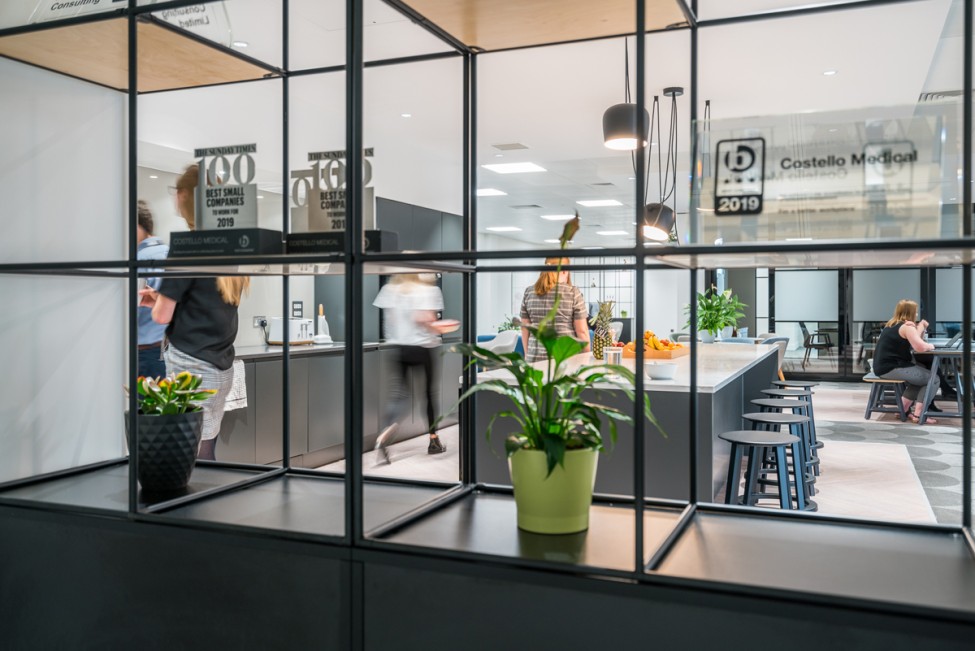
2 Wellness spaces
Dedicated wellness and mindfulness spaces of some kind are generally incorporated into our office designs. These include anything from Zen Spaces to Prayer Rooms where the key is having the option to step away to a quiet, and sometimes private, space. Such areas can be hugely beneficial, allowing staff to take time for quiet contemplation or for concentration away from a busy open plan office. Spaces include Wellness Rooms/Areas and Prayer Rooms but quiet space can also be achieved with furniture solutions too.
3 Games areas
Games areas within breakout spaces have been included in office designs for some time now. They engender relaxation, collaboration and team building and can include pool, table tennis, foosball, darts and more recently gaming. As we know, relaxation often aids focus so identifying whether this is something that would appeal to your staff is important. However, games areas are space hungry and can be noisy, so finding the right solution is fundamental to their success.
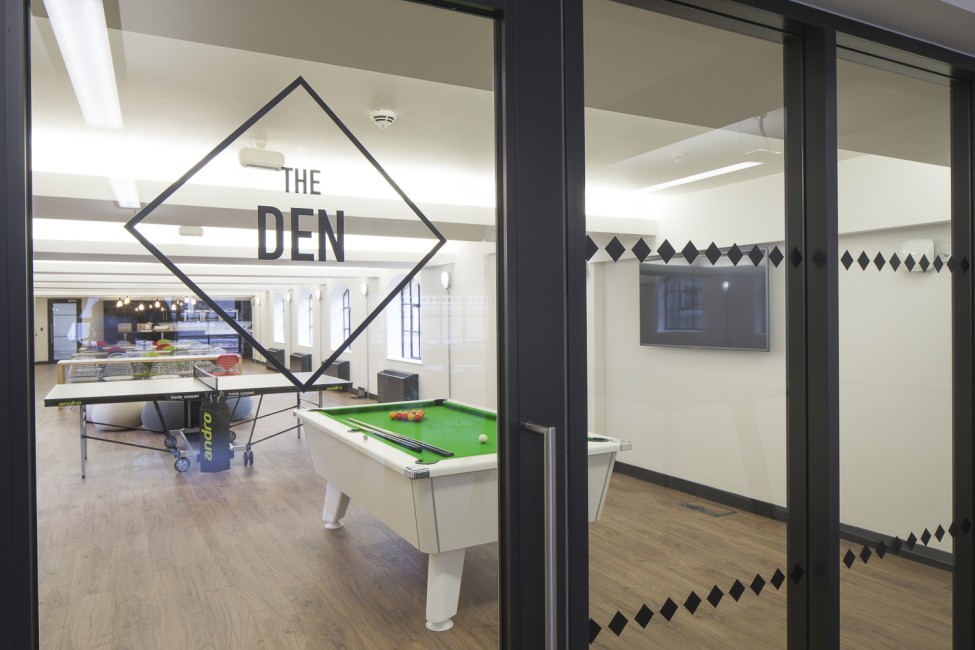
4 Social areas
It’s often said that employees in the office spend more time with their colleagues than their families and, given that, it’s important to enable teams to socialise together and understand each other better. Harmony among staff is a core element of teambuilding, and being able to sit down, share a coffee and learn more about the people you’re collaborating with is the most effective way to build and maintain relationships. With square footage inevitably expensive, these spaces are often combined with breakout facilities.
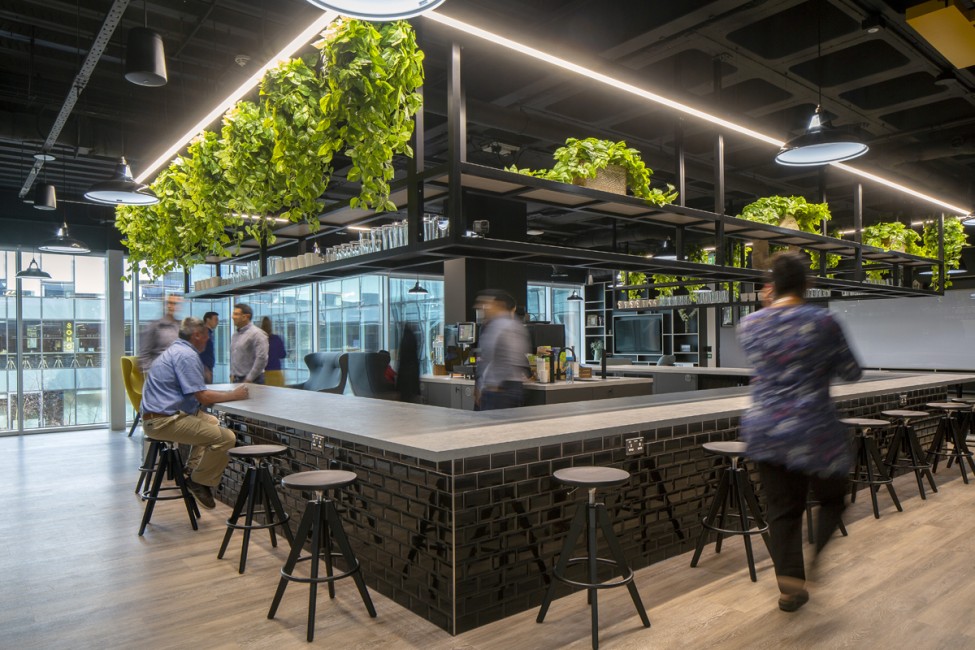
5 Spaces for drinking and eating
Providing a full-equipped kitchen and dining area will invariably contribute towards employee wellbeing, especially if healthy options are provided for snacks and lunches. However, preparing our own food and drinks can be relaxing too, and enjoying them in a modern, contemporary and comfortable setting can boost morale, so it’s beneficial to spend time planning an appropriate space for the size of your workforce.
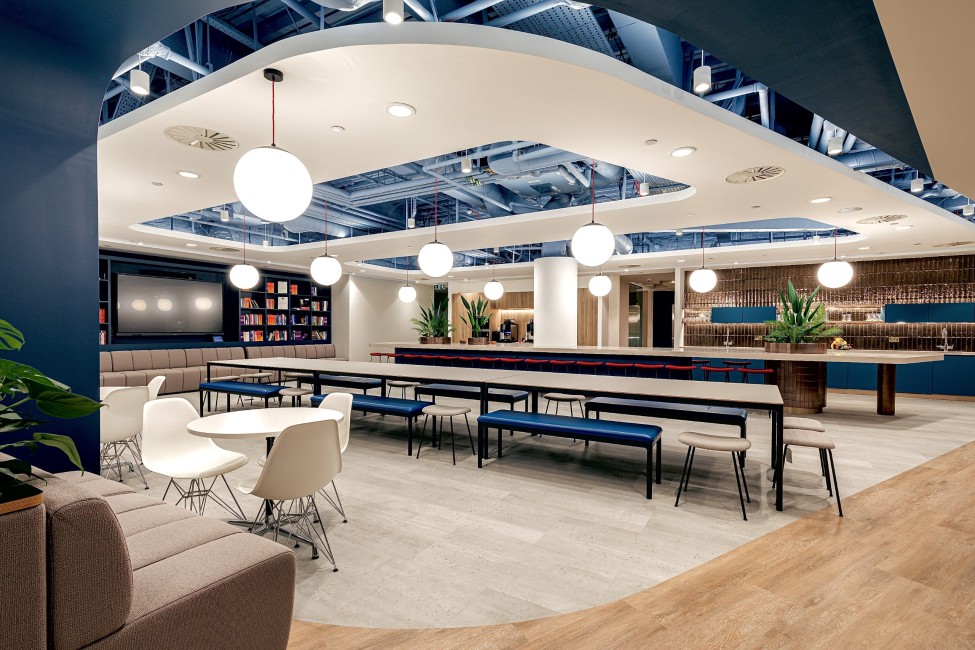
6 Sleep space
Slightly more radical is the concept of sleep zones, where employees can head off for a power nap during their working day in order to emerge refreshed and re-energised.
This obviously isn’t for everyone but successful implementation is often cultural, where a few minutes spent in a sleep zone can enhance performance and improve productivity. Sleep zones can be space efficient too, with compact furniture solutions offering acoustic properties for sound absorption.
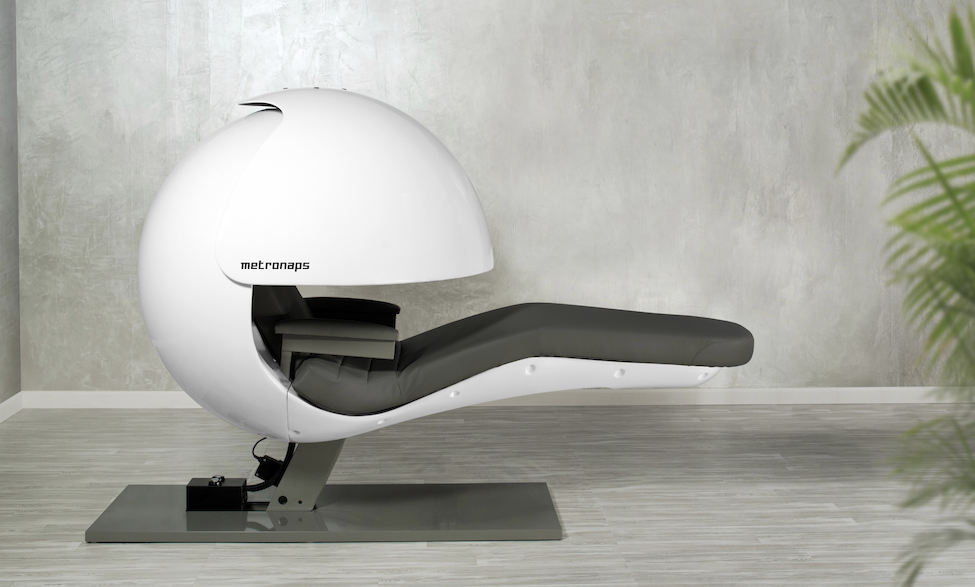
7 Planting and biophilia
Most office workers spend c90% of their time indoors and introducing plants to the office can provide a number of benefits, including improving air quality, reducing stress levels and promoting a general feelgood factor. Plants and natural structures can also make your workspace more productive as they help with acoustics by deflecting and absorbing sound.
There are many options to include biophilia withing your workspace. Portable ‘green walls’ can help to provide an immersive workspace experience, and can also be used to separate space. Smaller flower arrangements, meanwhile, can break up large areas by introducing colour and texture, and they can also be changed to reflect the seasons. Read our post on the benefits of biophilia here.
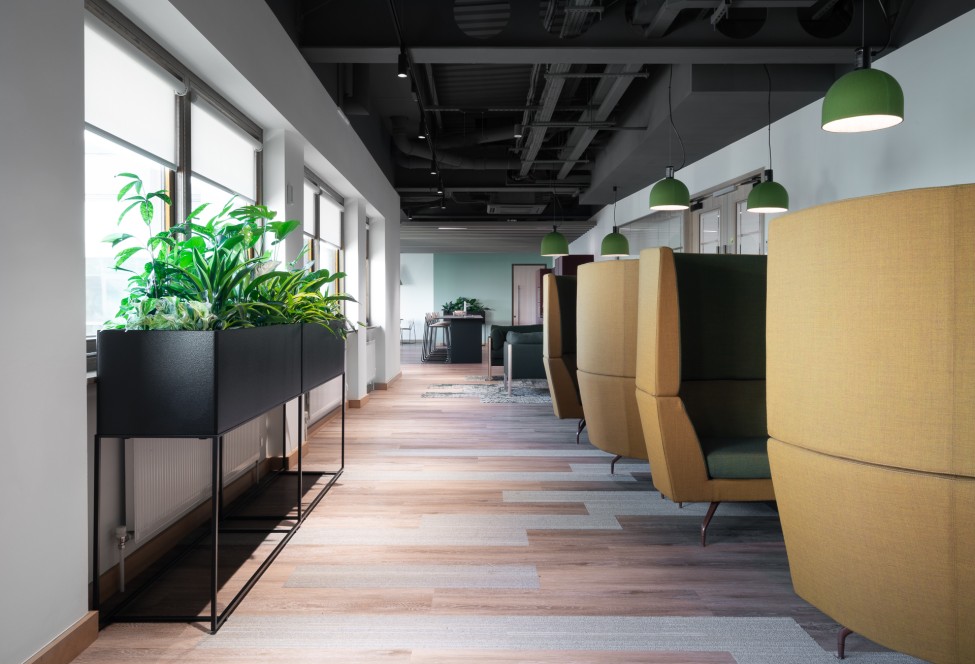
8 Communication
A key consideration during the planning stage of any project is identifying how people and departments need to communicate with each other. Layouts can be inclusive or divisive and both are likely to be necessary to create an environment that works. Consistent and reliable infrastructure is also key to seamless communication, even more so with hybrid working.
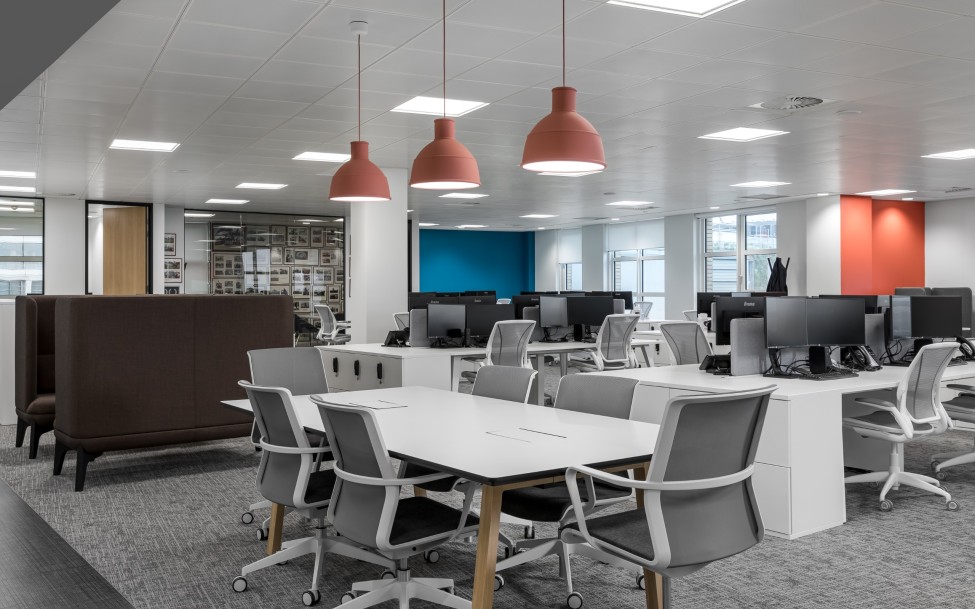
Get in touch
The Workspace Consultants specialise in office design and office furniture in Cambridge, London, and Manchester. If you’re looking to redesign your workspace, call us on 01223 656111 or complete our enquiry form to book an initial discussion.

